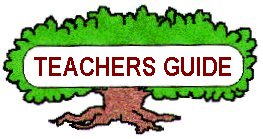| Introduction Welcome Page
Glossary
Internet Links
References
Credits
Index
FAQ page
Section One
- Tree Basics
What
is a Forest?
Michigan Forest Descriptors
Area
Timber Volume
Number of
Trees
Size Class
Distribution of Trees
Stand
Composition
Tree Age &
Stand Age Classes
Ownership
Forest Growth, Harvest,
and Mortality
Michigan’s Forest Relative
to Places
U.S. Forestry Trends
A Tree Identification Primer
ID Characteristics
State Species List
How to Use Dichotomous Keys
Tree ID Websites
Tree ID Glossary
Michigan Forest History
Five Eras of Forest
History
Land Survey
Metes &
Bounds
U.S. Public
Land Survey
Legal
Descriptions
How the Survey Works
Land Survey
Measurement Units
Map & Compass
Going From
Point "A" to Point "B"
Measuring
An Area in the Landscape
Determining Your
Pace
A Note About
Compasses
True vs.
Magnetic North
Section
Two - Forest Environment
Tree Physiology
The
Necessities of Life
Tree Parts
Photosynthesis
and Respiration
Chlorophyll
Tree Growth
Fall Color
Change
Sunlight
Environmental
Factors
Tree
Regeneration Strategies
Longevity
Winter
Adaptations of Trees
The Ever-changing Forest
Succession &
Forest Disturbance
Forest Ecology
Composition -
diversity, abundance, associations,
populations, communities, ecosystems
Structure -
vertical & horizontal arrangement,
stand density, edge effects, islands & fragmentation,
snags, micro-environments, appearance
Function -
energy trophics, nutrient cycling,
weathering, hydrologic cycle, temperature, humidity,
succession, disturbance |
Section Two - Forest Environment (continued) Wildlife Ecology
What
is Wildlife?
Habitat -
site, space, food, water, shelter, variability
Population
Dynamics - age, lifespan, sex ratio,
natality, mortality, interspecific & intraspecific
dynamics, territory, migration, carrying capacity
Cycles
- S-curve, annual, short, long, irregular, irruptive
Winter Adaptation
of Animals
Forest Health
Insects
& Diseases
Fire
Exotic
Species
Hydrologic Cycle
Hydrologic
Cycle
Great Lakes
Nutrient Cycling and Soils
Nutrient Cycles
Soil Types, Particle
Sizes, Textures
Lowdermilk Essay
Section
Three - Wood Products
Getting Wood to Market
Timber Sale Contracts
Stumpage
Michigan Wood-Using Mills
Michigan Wood Products
Reduce, Reuse, Recycle, RENEW!
Michigan Forest Industry Economics
Types of Raw Wood Forest Products
Federal Income Tax Implications
Section
Four - Forest Recreation
Recreation by Forest
Ownership
Recreation Activities
Section Five -
Balance
Biology, Economics, and
Sociology
A Forestry Primer
What is Forestry?
What Are Some Examples of Forestry
Careers In Forestry
Forest Management Systems
Selection
Clearcutting
Shelterwood
Regeneration
Plantations
Tree Planting
Multiple Use
Case Studies from the CD-ROM
Western
Upper Peninsula
Eastern
Upper Peninsula
Northern
Lower Peninsula
Southern
Lower Peninsula
Use of Wood
Wood is Good!
Essay by Dr. Jim Bowyer
Essay by Dr. Patrick Moore
Essay by Don Smith
Where Does Our Wood
Come From?
How Much Wood Do We
Harvest in Michigan?
Forest Management Guidelines for Michigan |



